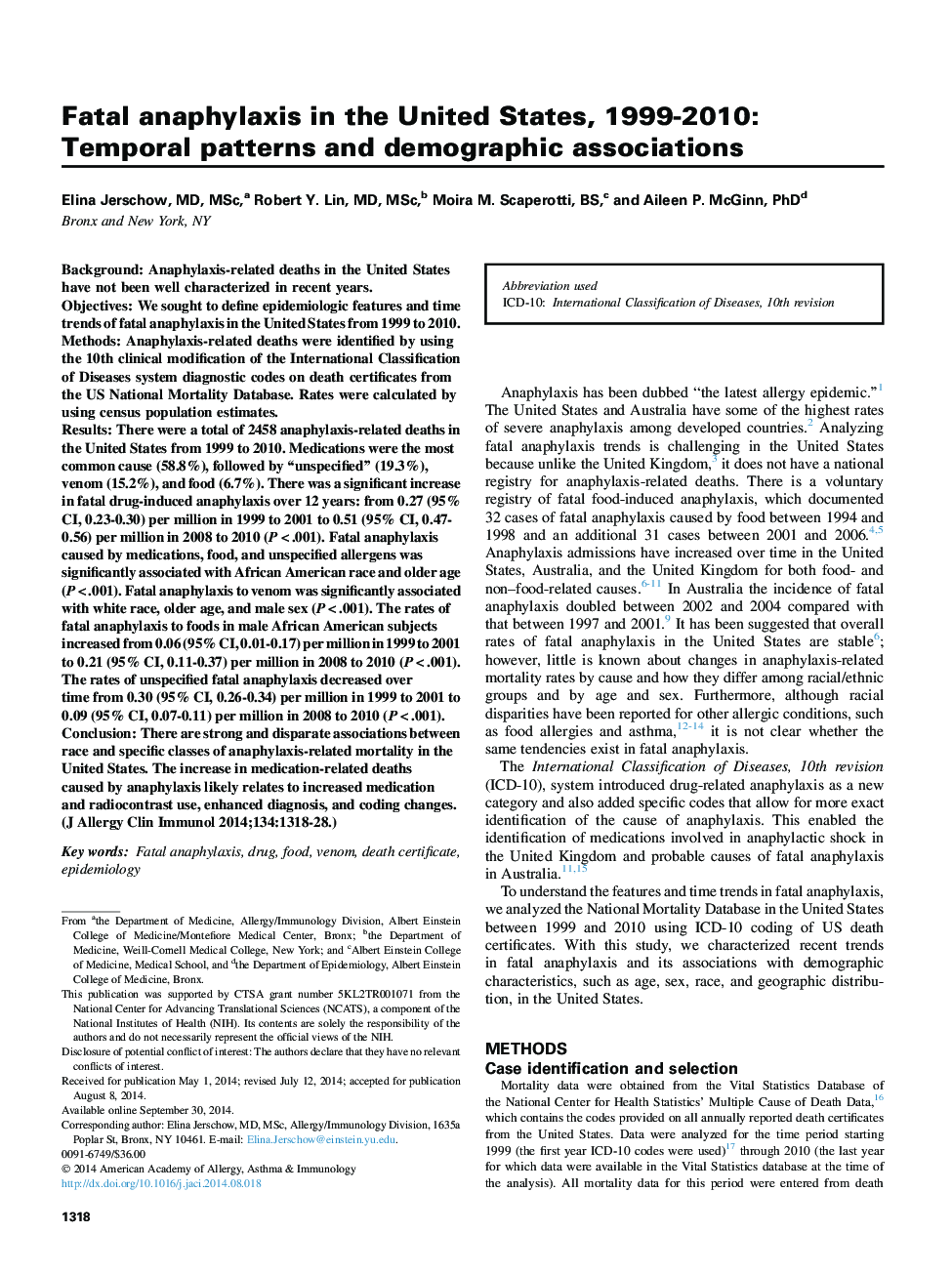| Article ID | Journal | Published Year | Pages | File Type |
|---|---|---|---|---|
| 6065826 | Journal of Allergy and Clinical Immunology | 2014 | 18 Pages |
BackgroundAnaphylaxis-related deaths in the United States have not been well characterized in recent years.ObjectivesWe sought to define epidemiologic features and time trends of fatal anaphylaxis in the United States from 1999 to 2010.MethodsAnaphylaxis-related deaths were identified by using the 10th clinical modification of the International Classification of Diseases system diagnostic codes on death certificates from the US National Mortality Database. Rates were calculated by using census population estimates.ResultsThere were a total of 2458 anaphylaxis-related deaths in the United States from 1999 to 2010. Medications were the most common cause (58.8%), followed by “unspecified” (19.3%), venom (15.2%), and food (6.7%). There was a significant increase in fatal drug-induced anaphylaxis over 12 years: from 0.27 (95% CI, 0.23-0.30) per million in 1999 to 2001 to 0.51 (95% CI, 0.47-0.56) per million in 2008 to 2010 (P < .001). Fatal anaphylaxis caused by medications, food, and unspecified allergens was significantly associated with African American race and older age (P < .001). Fatal anaphylaxis to venom was significantly associated with white race, older age, and male sex (P < .001). The rates of fatal anaphylaxis to foods in male African American subjects increased from 0.06 (95% CI, 0.01-0.17) per million in 1999 to 2001 to 0.21 (95% CI, 0.11-0.37) per million in 2008 to 2010 (P < .001). The rates of unspecified fatal anaphylaxis decreased over time from 0.30 (95% CI, 0.26-0.34) per million in 1999 to 2001 to 0.09 (95% CI, 0.07-0.11) per million in 2008 to 2010 (P < .001).ConclusionThere are strong and disparate associations between race and specific classes of anaphylaxis-related mortality in the United States. The increase in medication-related deaths caused by anaphylaxis likely relates to increased medication and radiocontrast use, enhanced diagnosis, and coding changes.
